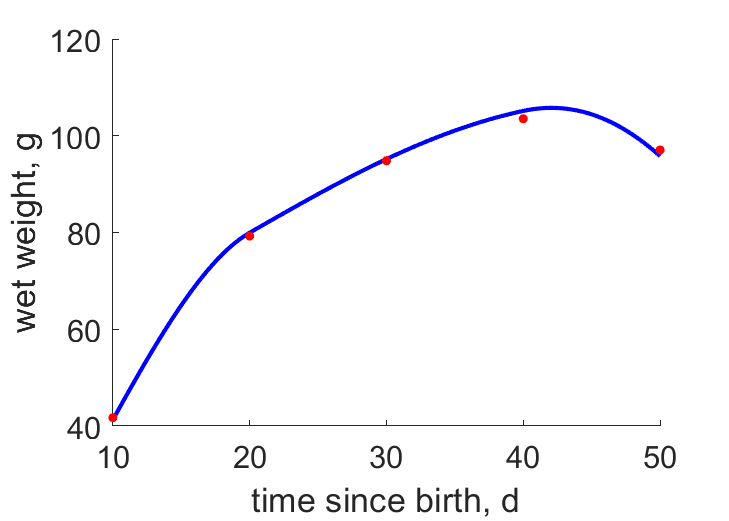Predictions & Data for this entry
| Model: std | climate: BWk, BSk, Csa, Dsa | migrate: Ml | phylum: |
| COMPLETE = 2.5 | ecozone: THp | food: biCi | class: |
| MRE = 0.038 | habitat: 0iTh, 0iTf, 0iTi, 0iTg | gender: Dg | order: |
| SMSE = 0.003 | embryo: Tncfm | reprod: O | family: |
Zero-variate data
| Data | Observed | Predicted | (RE) | Unit | Description | Reference |
|---|---|---|---|---|---|---|
| ab | 20 | 21.89 | (0.09436) | d | age at birth | avibase |
| tx | 50 | 49.37 | (0.01266) | d | time since birth at fledging | avibase |
| tp | 150 | 137 | (0.08675) | d | time since birth at puberty | guess |
| tR | 730 | 730 | ( 0) | d | time since birth at 1st brood | avibase |
| am | 9490 | 9872 | (0.0403) | d | life span | avibase |
| Ww0 | 6.05 | 5.62 | (0.071) | g | initial wet weight | avibase |
| Wwi | 98 | 102.3 | (0.04363) | g | ultimate wet weight for females | avibase |
| Wwim | 94 | 93.96 | (0.0003731) | g | ultimate wet weight for males | avibase |
| Ri | 0.007123 | 0.006807 | (0.04434) | #/d | maximum reprod rate | avibase |
Uni- and bivariate data
| Data | Figure | Independent variable | Dependent variable | (RE) | Reference |
|---|---|---|---|---|---|
| tW |  | time since birth | wet weight | (0.0105) | BizeMetc2006 |
Pseudo-data at Tref = 20°C
| Data | Generalised animal | Tachymarptis melba | Unit | Description |
|---|---|---|---|---|
| v | 0.02 | 0.02487 | cm/d | energy conductance |
| p_M | 18 | 486.3 | J/d.cm^3 | vol-spec som maint |
| k_J | 0.002 | 0.01997 | 1/d | maturity maint rate coefficient |
| k | 0.3 | 0.3003 | - | maintenance ratio |
| kap | 0.8 | 0.9582 | - | allocation fraction to soma |
| kap_G | 0.8 | 0.8008 | - | growth efficiency |
| kap_R | 0.95 | 0.95 | - | reproduction efficiency |
Discussion
- Feeding is reduced just before fledge
- Males are assumed to differ from females by {p_Am} only
- mod_1: v is reduced
- mod_2: Pseudo-data point k is used, rather than k_J; Data set tp and parameter t_R are added, the latter replacing clutch interval t_N. Postnatal T is based on PrinPres1991, see get_T_Aves. See further the revision page, theme puberty
Bibliography